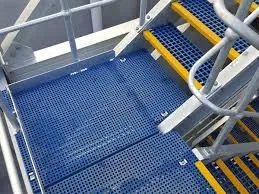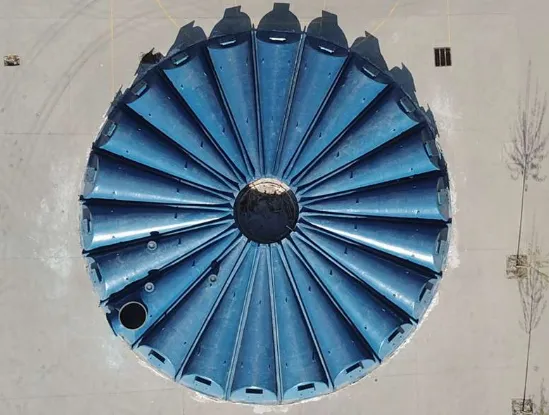
-
 Afrikaans
Afrikaans -
 Albanian
Albanian -
 Amharic
Amharic -
 Arabic
Arabic -
 Armenian
Armenian -
 Azerbaijani
Azerbaijani -
 Basque
Basque -
 Belarusian
Belarusian -
 Bengali
Bengali -
 Bosnian
Bosnian -
 Bulgarian
Bulgarian -
 Catalan
Catalan -
 Cebuano
Cebuano -
 China
China -
 China (Taiwan)
China (Taiwan) -
 Corsican
Corsican -
 Croatian
Croatian -
 Czech
Czech -
 Danish
Danish -
 Dutch
Dutch -
 English
English -
 Esperanto
Esperanto -
 Estonian
Estonian -
 Finnish
Finnish -
 French
French -
 Frisian
Frisian -
 Galician
Galician -
 Georgian
Georgian -
 German
German -
 Greek
Greek -
 Gujarati
Gujarati -
 Haitian Creole
Haitian Creole -
 hausa
hausa -
 hawaiian
hawaiian -
 Hebrew
Hebrew -
 Hindi
Hindi -
 Miao
Miao -
 Hungarian
Hungarian -
 Icelandic
Icelandic -
 igbo
igbo -
 Indonesian
Indonesian -
 irish
irish -
 Italian
Italian -
 Japanese
Japanese -
 Javanese
Javanese -
 Kannada
Kannada -
 kazakh
kazakh -
 Khmer
Khmer -
 Rwandese
Rwandese -
 Korean
Korean -
 Kurdish
Kurdish -
 Kyrgyz
Kyrgyz -
 Lao
Lao -
 Latin
Latin -
 Latvian
Latvian -
 Lithuanian
Lithuanian -
 Luxembourgish
Luxembourgish -
 Macedonian
Macedonian -
 Malgashi
Malgashi -
 Malay
Malay -
 Malayalam
Malayalam -
 Maltese
Maltese -
 Maori
Maori -
 Marathi
Marathi -
 Mongolian
Mongolian -
 Myanmar
Myanmar -
 Nepali
Nepali -
 Norwegian
Norwegian -
 Norwegian
Norwegian -
 Occitan
Occitan -
 Pashto
Pashto -
 Persian
Persian -
 Polish
Polish -
 Portuguese
Portuguese -
 Punjabi
Punjabi -
 Romanian
Romanian -
 Russian
Russian -
 Samoan
Samoan -
 Scottish Gaelic
Scottish Gaelic -
 Serbian
Serbian -
 Sesotho
Sesotho -
 Shona
Shona -
 Sindhi
Sindhi -
 Sinhala
Sinhala -
 Slovak
Slovak -
 Slovenian
Slovenian -
 Somali
Somali -
 Spanish
Spanish -
 Sundanese
Sundanese -
 Swahili
Swahili -
 Swedish
Swedish -
 Tagalog
Tagalog -
 Tajik
Tajik -
 Tamil
Tamil -
 Tatar
Tatar -
 Telugu
Telugu -
 Thai
Thai -
 Turkish
Turkish -
 Turkmen
Turkmen -
 Ukrainian
Ukrainian -
 Urdu
Urdu -
 Uighur
Uighur -
 Uzbek
Uzbek -
 Vietnamese
Vietnamese -
 Welsh
Welsh -
 Bantu
Bantu -
 Yiddish
Yiddish -
 Yoruba
Yoruba -
 Zulu
Zulu
Mar . 05, 2025 02:02
Back to list
frp damper
In the ever-evolving landscape of construction and industrial applications, FRP (Fiber Reinforced Polymer) dampers have emerged as game-changers, providing innovative solutions for vibration control and structural stability. As industries continue to demand high-performance materials that are both cost-effective and sustainable, the role of FRP dampers has taken center stage due to their unique properties and advantages.
Trustworthiness of FRP dampers is bolstered by rigorous industry standards and certifications they consistently meet or exceed. Compliance with standards such as ISO, ASTM, and others ensures that FRP dampers are reliable, safe, and efficacious. Manufacturers of FRP dampers frequently provide detailed documentation and transparent testing results, enabling engineers and procurement specialists to make informed decisions. Testimonials from satisfied clients across sectors—from transport to renewable energy—corroborate the dependability and effectiveness of these damping solutions. Expert opinions also emphasize the eco-friendly nature of FRP dampers as a noteworthy advantage. Traditional dampers, often made of metals that are susceptible to corrosion, not only require frequent replacement but also contribute significantly to environmental waste. In contrast, FRP dampers offer enhanced corrosion resistance, reducing the ecological footprint by prolonging the lifespan of damping systems and minimizing the need for periodic maintenance. Moreover, the production of FRP dampers leverages less energy-intensive processes, further aligning with sustainable construction practices. The evolution of FRP dampers demonstrates an ongoing commitment to innovate within the industry, illustrating how modern materials can elevate the standards of construction quality and efficiency. As more industries realize the myriad benefits associated with fiber-reinforced polymers, their adoption is expected to rise, paving the way for smarter, more resilient structures worldwide. The narrative of FRP dampers is one of triumph through technical advancement, setting the stage for future discoveries that continue to redefine what is possible in structural engineering and vibration damping applications.


Trustworthiness of FRP dampers is bolstered by rigorous industry standards and certifications they consistently meet or exceed. Compliance with standards such as ISO, ASTM, and others ensures that FRP dampers are reliable, safe, and efficacious. Manufacturers of FRP dampers frequently provide detailed documentation and transparent testing results, enabling engineers and procurement specialists to make informed decisions. Testimonials from satisfied clients across sectors—from transport to renewable energy—corroborate the dependability and effectiveness of these damping solutions. Expert opinions also emphasize the eco-friendly nature of FRP dampers as a noteworthy advantage. Traditional dampers, often made of metals that are susceptible to corrosion, not only require frequent replacement but also contribute significantly to environmental waste. In contrast, FRP dampers offer enhanced corrosion resistance, reducing the ecological footprint by prolonging the lifespan of damping systems and minimizing the need for periodic maintenance. Moreover, the production of FRP dampers leverages less energy-intensive processes, further aligning with sustainable construction practices. The evolution of FRP dampers demonstrates an ongoing commitment to innovate within the industry, illustrating how modern materials can elevate the standards of construction quality and efficiency. As more industries realize the myriad benefits associated with fiber-reinforced polymers, their adoption is expected to rise, paving the way for smarter, more resilient structures worldwide. The narrative of FRP dampers is one of triumph through technical advancement, setting the stage for future discoveries that continue to redefine what is possible in structural engineering and vibration damping applications.
Next:
Related Products
Latest news
-
Fiberglass 90 Degree Elbow for Custom Tanks & High Pressure Pipes Durable and Corrosion ResistantNewsJun.24,2025
-
Exploring the Benefits of Top Hammer Drifter Rods for Enhanced Drilling PerformanceNewsJun.10,2025
-
High-Precision Fiberglass Winding Machine for GRP/FRP Pipe Production – Reliable & Efficient SolutionsNewsJun.10,2025
-
FRP Pipes & Fittings for Shipbuilding - Corrosion-Resistant & LightweightNewsJun.09,2025
-
Premium FRP Flooring Solutions Durable & Slip-ResistantNewsJun.09,2025
-
Premium Fiberglass Rectangular Tanks Durable & Lightweight SolutionNewsJun.09,2025









